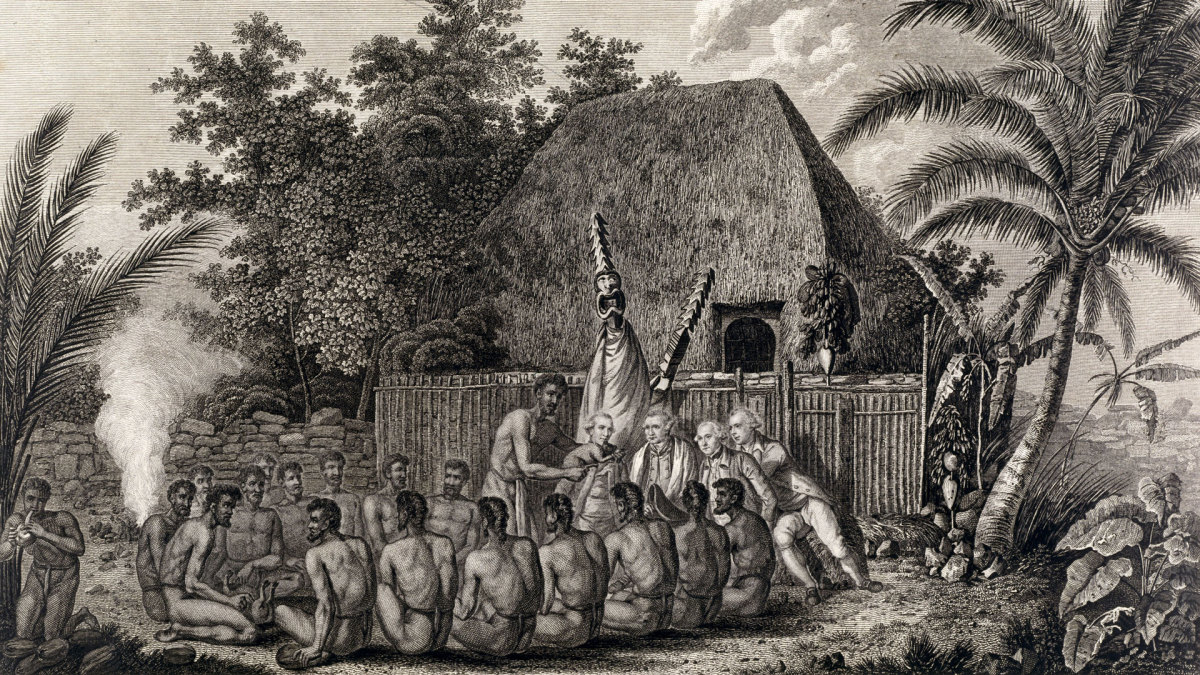London’s St. Martin-in-the-Fields church was home to the graves of plenty of English noblemen, but it had never seen a pair of graves quite like this. They belonged to Kamehameha II and his queen, Kamamalu, and they were just temporary resting places. It was July 1824, and soon, the Hawaiian king and queen would be disinterred and put on a ship back to their home, the Sandwich Islands.
Just days before, the royals’ every move had been avidly covered by the press, from Kamamalu’s provocative enjoyment of cigars to Kamehameha’s trip to the city’s zoo and puppet theater. The interest was well warranted: The Hawaiian king and queen may have been looked down upon by George IV’s court, but they were also London’s most talked-about couple.
Now, though, they were dead, the victims of measles they are thought to have contracted during a
visit to the Royal Military Asylum, an orphanage for the children of military parents that was known for its epidemics of childhood diseases.
The measles deaths of Hawaii’s monarchs were tragic—and foretold another tragedy. When measles finally hit the Hawaiian islands in 1848, it began a long sequence of epidemics that tore the kingdom apart. Until their contact with Europeans, Hawaiians had lived in an isolation that helped their culture and population flourish. That isolation ended up contributing to their downfall. During the 19th and early 20th century, epidemics of measles, smallpox and other diseases threatened to wipe out the entire Native Hawaiian population, and disrupted the culture and lives of the island’s residents.
By the time Kamehameha II and his queen, Kamamalu, headed to England in 1824, Hawaii had been in contact with Europeans for nearly half a century. In 1778, Captain James Cook had explored the islands. He paid the price: After attempting to kidnap Kalaniʻōpuʻu, who ruled over of the island of Hawaii, in retaliation for the theft of one of his boats, Cook was killed by one of the chief’s attendants. After Cook, Hawaiian culture
changed. Sporadic contact with Europeans introduced Native Hawaiians to different forms of warfare and government. In 1810, Kamehameha I used European-style warfare to take over and unite all of the Hawaiian islands.

European contact didn’t just change the structure of Hawaii. It also brought new diseases to the islands. Cook’s crew
introduced sexually transmitted diseases like syphilis and gonorrhea. Because of their island location, Native Hawaiians lacked immunity to infectious diseases like these, and they spread quickly. So did a “plague” that struck the island around 1803. Thought to have been yellow fever or a similar disease, the epidemic
resulted in up to 175,000 deaths, cutting the island’s pre-contact population in half.
Meanwhile, Kamehameha I’s family dynasty flourished. He died in 1819, and his first-born son succeeded him to the throne. Known as impulsive, Kamehameha II was fascinated by the foreign missionaries who had begun to come to the islands. In 1823, against his court’s advice, he sailed for England with his favorite of his five wives, Kamamalu, with the goal of thanking George IV, who had sent him a ship.
The visit was unannounced, and the monarch’s arrival in London was the talk of the town. The appearance and behavior of the unfamiliar couple fascinated English observers, who reported on their every movement. Though the public was enthralled by the visitors, George IV put off seeing them. “As if I would sit at the table with such a pair of damned cannibals,” he
said.